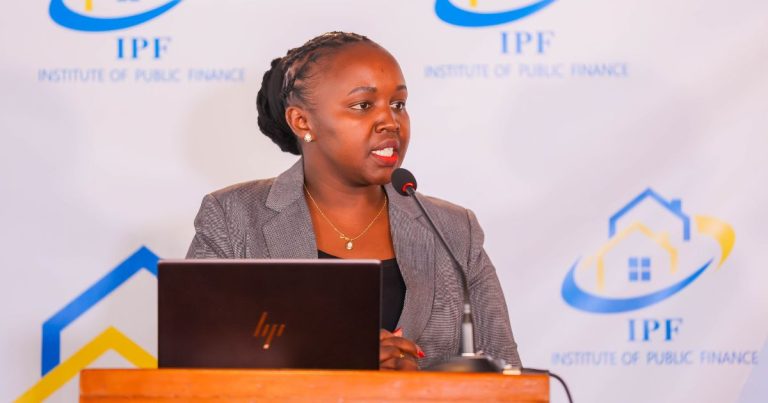Is Carbon Trading the Solution to Kenya’s Climate Finance Problem?
Kenya faces inadequate budgetary allocation towards climate finance. In the 2024/25 Budget, environmental protection, water, and natural resources were allocated KSh. 128.0 billion, predominantly for completing water projects and natural resource management, leaving minimal funds for climate action and emergency-related expenses[1]. While Kenya advocates for global climate initiatives, adaptation spending by the government is below the Nationally Determined Contributions (NDC) commitment[2]. The diversion of resources from the health and education sectors to help mitigate the effects of climate change (e.g. 2024 floods) exposed the inefficiencies of our climate action funding. As such, the need for alternative sources of climate finance in Kenya is urgent, and carbon trading offers a viable solution.
Carbon trading involves buying and selling credits permitting an entity to emit a certain amount of greenhouse gases or carbon dioxide, rewarding emission reductions while financially penalizing continued emissions[3]. It can generate funds for climate projects, e.g. reforestation and renewable energy. When polluters in other countries need to cover their emissions, they can pay for reduced or avoided emissions in Kenya through the newly established compliance markets under Article 6 of the Paris Agreement, as discussed at COP29, which include Internationally Transferred Mitigation Outcomes (ITMOs) for bilateral or multilateral carbon credit trading and the Paris Agreement Crediting Mechanism (PACM) for standardized and transparent credits. Kenya’s pledge to plant 15 billion trees by 2032 along with projects like the Lake Turkana Wind Power, enhance its carbon credit potential[4]. Protecting forests like Mau and Mount Elgon, through evicting encroachers and planting more trees, supports conservation and could become viable carbon credit projects.
Expanding into international compliance markets is crucial for increasing revenue but requires Kenya to align its offerings with global standards. International purchasers will only buy Kenyan credits if they are recognized internationally. This involves authorization to prevent double counting and ensuring emissions reductions are counted by the investor country toward its Nationally Determined Contributions (NDCs) under the Paris Agreement[5]. Despite the Climate Change Amendment Act 2023, regulatory roles need definition, alignment with international standards, stronger regulations, and agency capacity building. Clarifying land rights, carbon credit ownership and educating market players on legal and benefit-sharing opportunities will ensure effective participation in international markets. Additionally, Kenya should optimize the 15% corporate income tax incentive for companies operating a carbon market exchange or emission trading system to attract foreign investors.
Countries with established carbon markets show that carbon trading generates substantial revenue while promoting sustainable development. In 2023, Emissions Trading Systems (ETS) revenues from international and domestic markets reached USD 74 billion, with the EU ETS generating 47.4 billion USD (63% of the total)[6]. While most of the revenue comes from domestic carbon markets, international compliance markets generated around USD 30 billion in 2023, demonstrating the substantial potential of compliance markets to provide adequate funding for climate projects. Countries like Brazil, Chile, India, and Turkey have reinvested proceeds from their carbon markets into reforestation, renewable energy projects, air quality improvement, and forest conservation efforts. Furthermore, Uganda’s success in using carbon credits from forest protection to support local communities and conservation efforts further demonstrates the potential of carbon markets[7]. These indicate that carbon markets can provide critical funding while stimulating economic growth through co-benefits providing a strong foundation for Kenya to follow.
Focusing on emission reduction projects, such as avoided deforestation, reforestation, and green energy initiatives, provides valuable funding through carbon credits. However, earning these credits requires verifiable emission reductions, which often involve investing in alternative solutions[8]. Verification by organizations like Verra or Gold Standard ensures carbon credit credibility. Prioritizing emission reductions over local development may divert resources from essential sectors like health, education, and infrastructure, causing potential unrest. Ignoring emission reductions could miss global climate mitigation opportunities and raise future costs. Wise reinvestment of carbon credit revenue in local projects is crucial to meeting climate and development goals, addressing pressing needs, and ensuring progress.
In conclusion, Kenya faces significant budgetary constraints in addressing climate action. Carbon trading offers a viable alternative source of climate finance. By following successful models, Kenya can enhance its carbon credit potential through reforestation, renewable energy, and forest conservation. However, balancing emission reductions with local development needs is essential to ensure funds effectively address local priorities.
[1] National Treasury. (2024, February). 2024 Budget Policy Statement. The National Treasury – The National Treasury of Kenya. link
[2] Budget Adaptation? What we know about how Kenya’s budget is evolving to tackle climate adaptation. link
[3] Wang, Z., Zhao, J., & Li, M. (2017). Analysis and optimization of carbon trading mechanism for renewable energy application in buildings. Renewable and Sustainable Energy Reviews, 73, 435-451.
[4] Kenyan Youth Perspectives on Forests. link
[5] The Paris Agreement and NDCs. link
[6] State and Trends of Carbon Pricing, 2024. link
[7] Trees for Global Benefits. link
[8] Record High Revenues from Global Carbon Pricing Near $100 Billion. link













